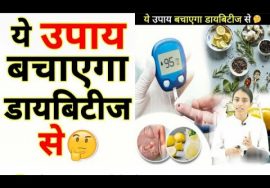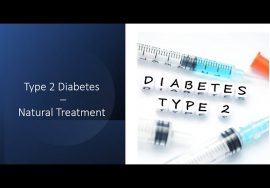Diabetic Ketoacidosis (DKA) Simplified
Support us on patreon by becoming our patron and help the medical students across the world to achieve eduaction!!
Diabetic ketoacidosis (DKA) is a potentially life-threatening complication of diabetes mellitus. Signs and symptoms may include vomiting, abdominal pain, deep gasping breathing, increased urination, weakness, confusion, and occasionally loss of consciousness.A person's breath may develop a specific smell. Onset of symptoms is usually rapid. In some cases people may not realize they previously had diabetes.
DKA happens most often in those with type 1 diabetes, but can also occur in those with other types of diabetes under certain circumstances. Triggers may include infection, not taking insulin correctly, stroke, and certain medications such as steroids. DKA results from a shortage of insulin; in response the body switches to burning fatty acids which produces acidic ketone bodies.DKA is typically diagnosed when testing finds high blood sugar, low blood pH, and ketoacids in either the blood or urine.
DKA most frequently occurs in those who know they have diabetes, but it may also be the first presentation in someone who had not previously been known to be diabetic. There is often a particular underlying problem that has led to the DKA episode; this may be intercurrent illness (pneumonia, influenza, gastroenteritis, a urinary tract infection), pregnancy, inadequate insulin administration (e.g. defective insulin pen device), myocardial infarction (heart attack), stroke or the use of cocaine. Young people with recurrent episodes of DKA may have an underlying eating disorder, or may be using insufficient insulin for fear that it will cause weight gain.
Diabetic ketoacidosis arises because of a lack of insulin in the body. The lack of insulin and corresponding elevation of glucagon leads to increased release of glucose by the liver (a process that is normally suppressed by insulin) from glycogen via glycogenolysis and also through gluconeogenesis. High glucose levels spill over into the urine, taking water and solutes (such as sodium and potassium) along with it in a process known as osmotic diuresis.[3] This leads to polyuria, dehydration, and polydipsia. The absence of insulin also leads to the release of free fatty acids from adipose tissue (lipolysis), which are converted through a process called beta oxidation, again in the liver, into ketone bodies (acetoacetate and β-hydroxybutyrate). β-Hydroxybutyrate can serve as an energy source in the absence of insulin-mediated glucose delivery, and is a protective mechanism in case of starvation. The ketone bodies, however, have a low pKa and therefore turn the blood acidic (metabolic acidosis). The body initially buffersthe change with the bicarbonate buffering system, but this system is quickly overwhelmed and other mechanisms must work to compensate for the acidosis. One such mechanism is hyperventilation to lower the blood carbon dioxide levels (a form of compensatory respiratory alkalosis). This hyperventilation, in its extreme form, may be observed as Kussmaul respiration.
The main aims in the treatment of diabetic ketoacidosis are replacing the lost fluids and electrolytes while suppressing the high blood sugars and ketone production with insulin. Admission to an intensive care unit or similar high-dependency area or ward for close observation may be necessary.












Is it possible to be in a KDA state and have no symptoms at all?
Nope patients with Type 1 Diabetes are mostly asymptomatic and first symptom they get is DKA and comes in as emergency
Man this is crazy. A month or more ago. I was hospitalized because of this. What’s crazy is waking up in the hospital & not remembering anything before that. That night all I remember was feeling hungry & thirsty, so I got some water & when I drank it I felt really nauseous. All I remember was vomiting & not being able to control it. I vomited in every trash can in the house, & that’s all I remember. My dad found me hours later in the morning on the floor breathing really breathing weird, & he said I was unresponsive when he tried to wake me up, so he called an ambulance and they took me to the hospital. I was in the ICU for about 5 days, they said my blood sugar was at 1,510, & that I was lucky my dad was there to call an ambulance, & that I could’ve died if he hadn’t been there. I had a really bad fever when they brought me in, & I had these blue like pads all over my body & those were keeping my body cold, it
Had me shivering like crazy. The crazy thing is I was having all these crazy symptoms before I was hospitalized. I had really blurry vision & it would switch off and on between being far sightedness & close sightedness. I was always very thirsty & i was needing to pee like crazy. I want to say I should’ve went to see a doctor or go to the hospital sooner but I didn’t because of the Covid-19 virus & was worried about going to a hospital or clinic because of being worried about the virus. If you are experiencing symptoms that are serious, don’t wait like I did, GO SEE A DOCTOR or GO TO A HOSPITAL.
@Speedy Medical thanks!! It was nice seeing further information on what was going on with me
May the force b with you!
Best explanation I ever seen! 💥 I’m happy I learn with out getting lost your the best
That potassium stuff at last is quite confusing, rest is a very good explanation. Thank you.
Literally one of the best way of explanation ….
Most simple and accurate explanation… Thank you so much ❤
DKA made easy, thanks dude
Thank you for this
Best explanation
Well explained
Great job
Best explanation …..
Very good thanks
Can u plz make vedio diabetes mellitus..
Super
Awesome👍👍😎
Hey do more videos plz
I Just understand DKA now thank you very much…
@Speedy Medical yes make more videos
Glad that you liked it; more power to you!
At 4.00 decrease in potassium level in blood pls clarify
U hav explain it but u hav said decrease in insulin causes potassium to comes out of cell. I think it should be like Decrease in insulin level causes potassium unable to come out of cell so more potassium inside cell leading to decrease in blood potassium level. Pls correct if i am wrong. Thank u
Insulin causes inward shift if potassium, so low insulin causes potassium to leak out, serum potassium will increase but total will decrease
Superb explanation and made me very easy to understand
Thanks much, study hard!